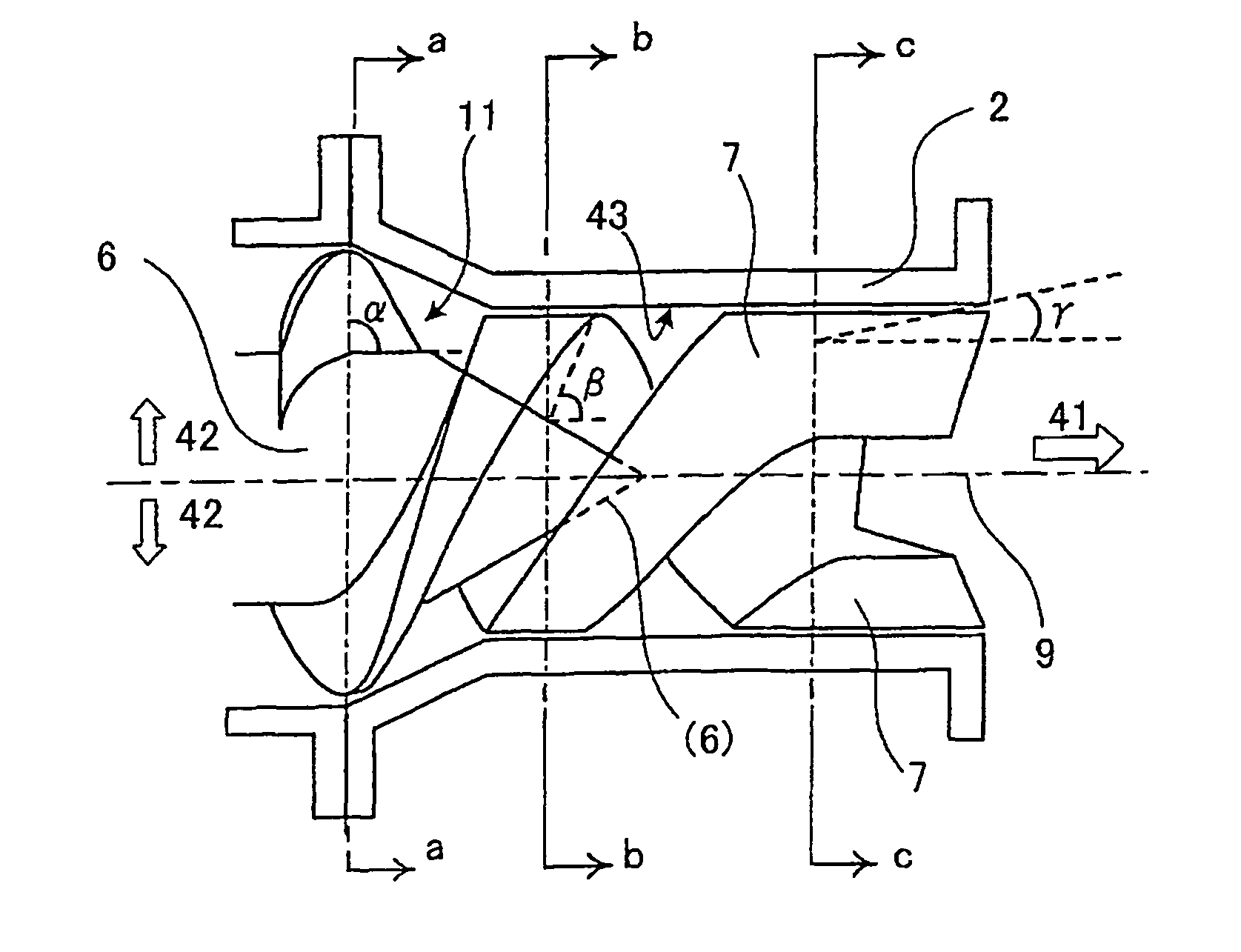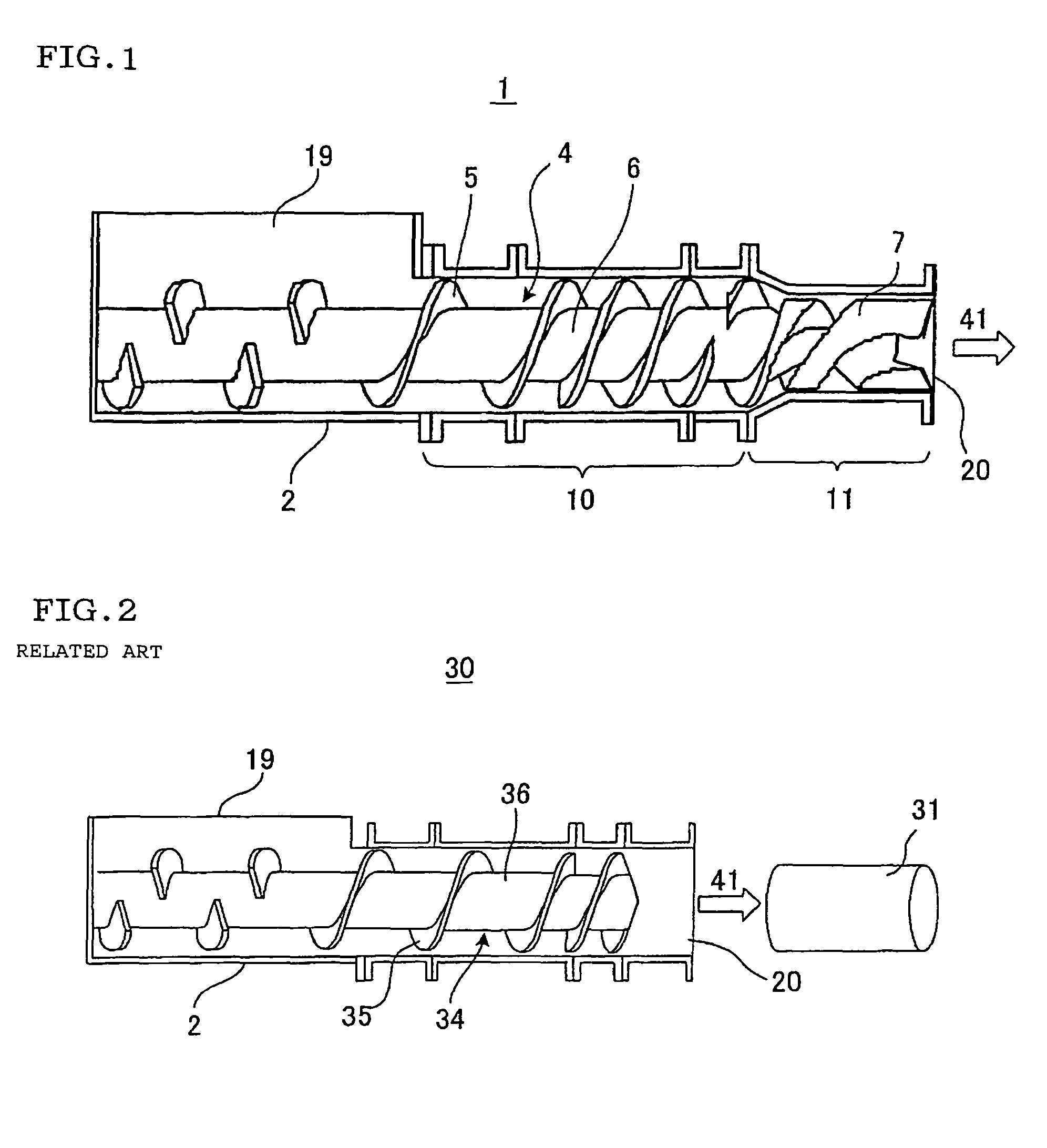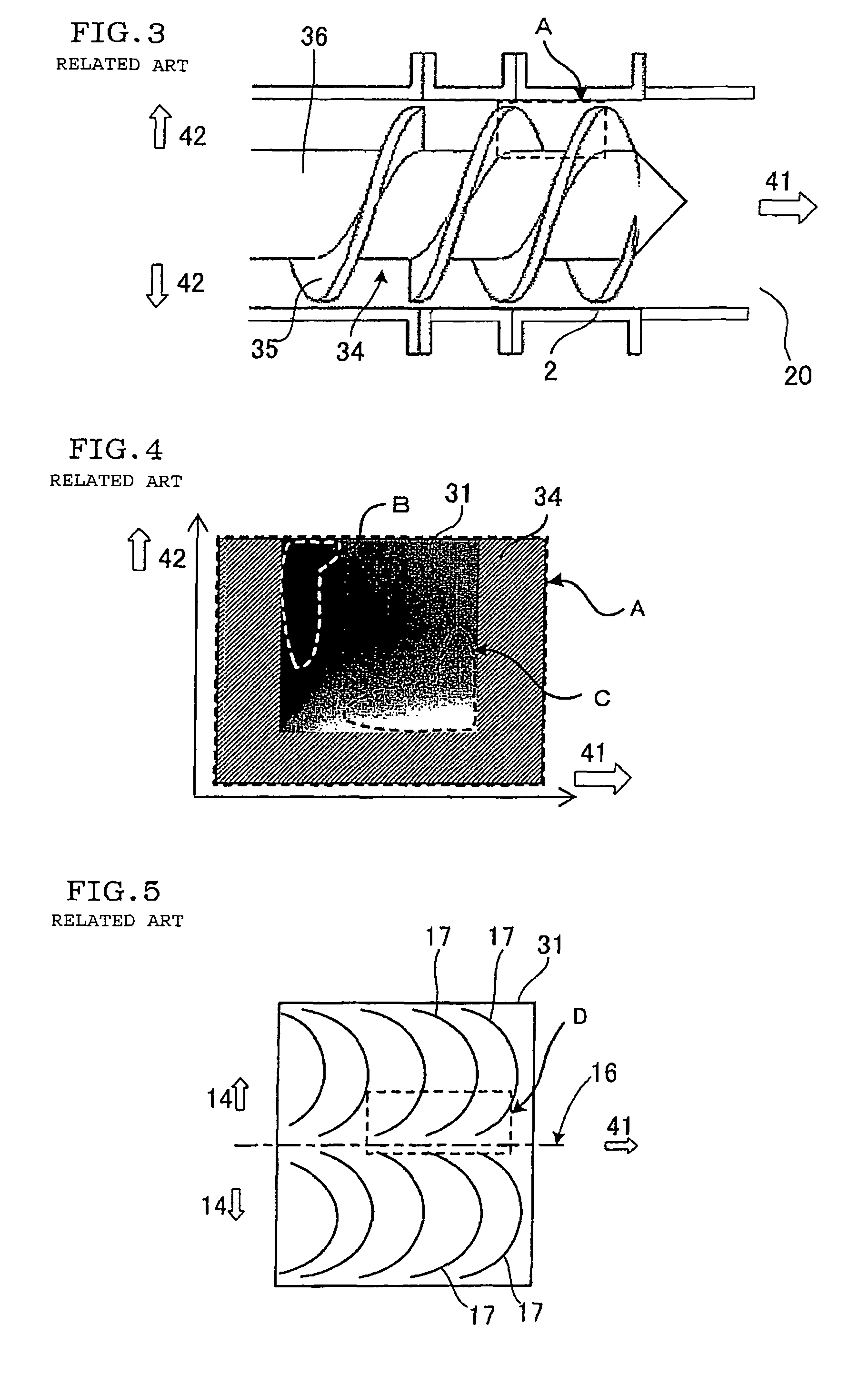Clay extruder
a technology of extruder and clay, which is applied in the field of clay extruder, can solve the problems of generating various formed article defects, forming defects of honeycomb structures, and affecting the quality of clay, so as to reduce the friction in the face where the rectifying rotary blade comes in contact with clay, and reduce the risk of device failure
- Summary
- Abstract
- Description
- Claims
- Application Information
AI Technical Summary
Benefits of technology
Problems solved by technology
Method used
Image
Examples
example 1
[0072]In the embodiment of the present invention, a columnar or columnar rectangular clay article was prepared by using a clay extruder 1 including a rectifying rotary blade 7 having the above-mentioned shape shown in FIGS. 1, 7. The center of this columnar or columnar rectangular clay article was cut as a test piece 18 in parallel with an extruding direction 41 as shown in FIG. 22, and the cut face of the columnar or columnar rectangular clay article was observed. FIG. 23 shows a schematic side view of the test piece 18 of Example 1. Arrows in FIG. 23 show a diametric direction 14 of the columnar or a rectangular-columnar article. As shown in FIG. 23, any non-uniform streak was not seen in the test piece 18 of the columnar or a rectangular-columnar article. A state in which both ends of this test piece were held and bent was observed to carry out a bending test, but the test piece uniformly extended, and any crack was not generated.
PUM
| Property | Measurement | Unit |
|---|---|---|
| distance | aaaaa | aaaaa |
| pressure | aaaaa | aaaaa |
| volume | aaaaa | aaaaa |
Abstract
Description
Claims
Application Information
 Login to View More
Login to View More - R&D
- Intellectual Property
- Life Sciences
- Materials
- Tech Scout
- Unparalleled Data Quality
- Higher Quality Content
- 60% Fewer Hallucinations
Browse by: Latest US Patents, China's latest patents, Technical Efficacy Thesaurus, Application Domain, Technology Topic, Popular Technical Reports.
© 2025 PatSnap. All rights reserved.Legal|Privacy policy|Modern Slavery Act Transparency Statement|Sitemap|About US| Contact US: help@patsnap.com



